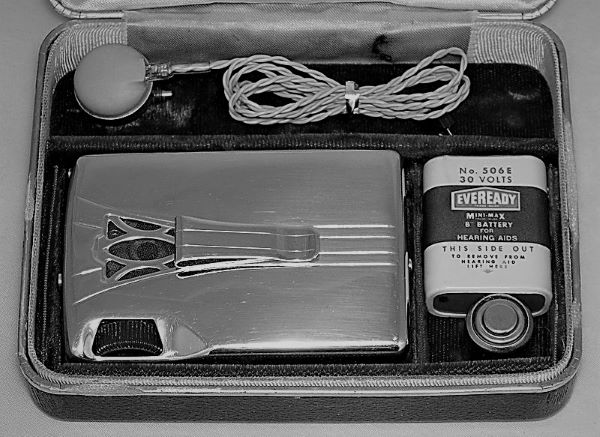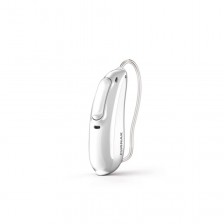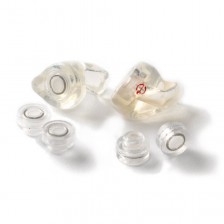The history of hearing aids


Did you know that the first hearing aids were large and difficult to handle boxes and took up as much space as a small suitcase?
They were nothing like today's small digital hearing aids, which can be hidden inside the ear and have near-perfect sound reproduction.
At first, the hearing aids were heavy and definitely not suitable for wearing everyday. An early hearing aid typically consisted of a separate microphone, an amplifier, headphones and a bulky battery. Since the device worked best when placed on a table and used with a pair of headphones, its use was problematic.
Although the battery was large, it only lasted a couple of hours at a time when the battery was discharged. On top of all this, early hearing aids were expensive and only a few people could afford to buy them.
First portable hearing aids
Already in 1902, three years after the first hearing aids were available, the hearing aid became lighter. Hearing impaired people could save energy and buy a smaller, wearable handheld device that worked better than previous models.
Although the design was smaller, the amplifier and batteries had to be hung around the neck and the microphone had to be held in the hand so that the user could hear correctly.
The people wearing these hearing aids must have attracted a lot of attention!
In addition, the size of the microphone varied according to the degree of hearing loss, so a person with a profound hearing loss was forced to use a large microphone with the hearing aid.
The large table models were used by many people for many years after the first portable hearing aids were introduced.
The revolutionary transistor
Portable and unwieldy hearing aids were used, after several improvements, well into the 1950s.
However, the invention of the transistor in 1947 revolutionized hearing aid technology. Until then, valves had been used in hearing aids, but the transistor made it possible to build smaller and better hearing aids.
The amplification capacity of the transistor was superior to that of the valves and, as a result, the batteries allowed the new hearing aids to be used for longer periods of time.
The first hearing impaired people to switch to the new transistor-powered hearing aids had to wear them on their bodies, but soon the hearing aids became so small that they could be worn directly behind or above the ear. These small devices meant that hearing-impaired people no longer attracted so much attention.
From the 1960s onwards, small hearing aids were developed in the canal. However, they were not as reliable as the larger, more visible behind-the-ear hearing systems, which underwent continuous improvement and became more discreet.
Digital
All the hearing aids had in common the analogue technology used for sound processing. The development of digital sound processing led to considerable improvements in the efficiency of the hearing aids.
The digital hearing aids are built on a small programmable computer and are capable of amplifying millions of different sound signals with great precision, thus improving the hearing ability of hearing-impaired people.
The first digital hearing aids were launched in the mid-1980s, but these early models were not very practical. It wasn't until about ten years later that digital hearing aids were successful, with small digital devices placed inside or behind the ear.
In many cases, the new digital hearing aids improve the hearing ability of hearing impaired people to such an extent that even people with a profound hearing loss can lead an almost normal life. Today, digital hearing aids make a decisive difference to people's quality of life.
We invite you to discover our wide range of hearing aids at Claso.





























